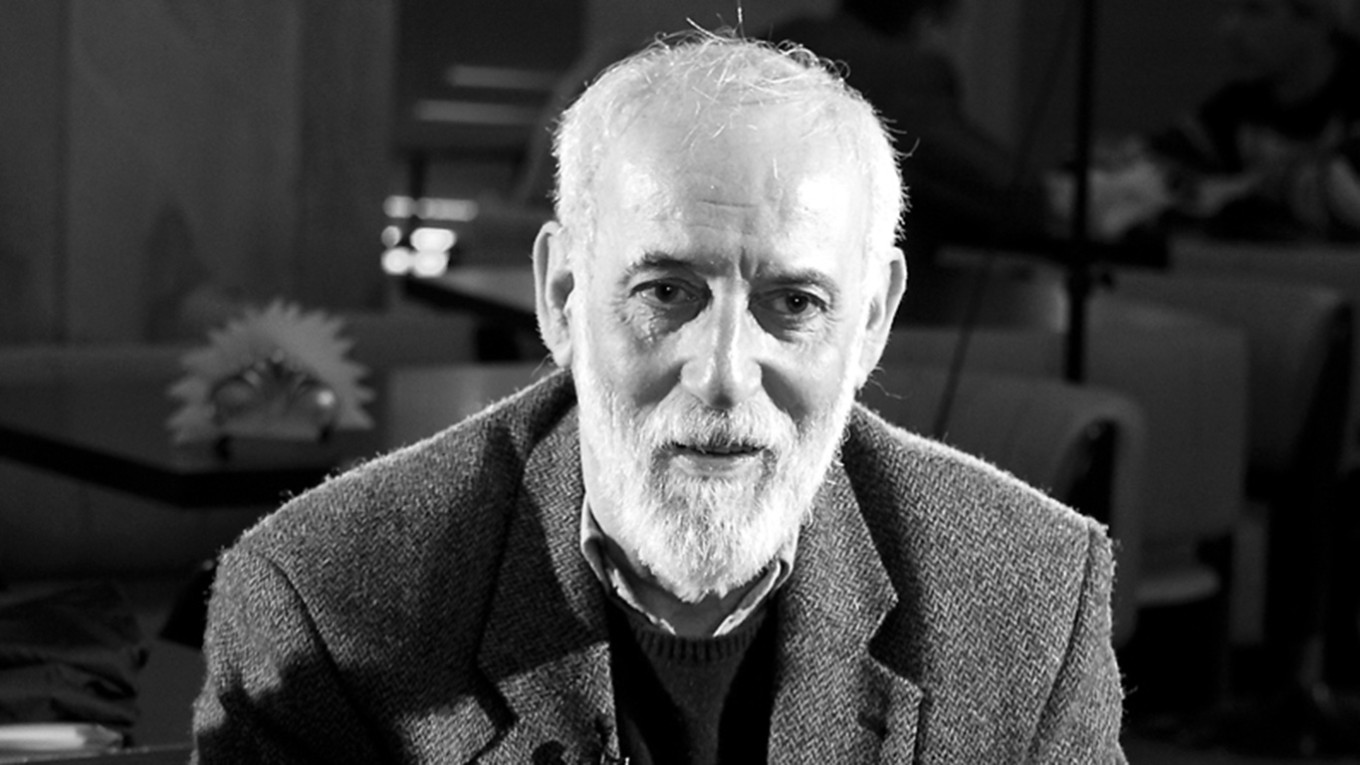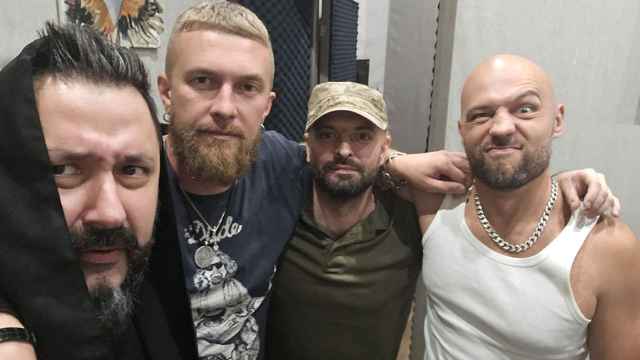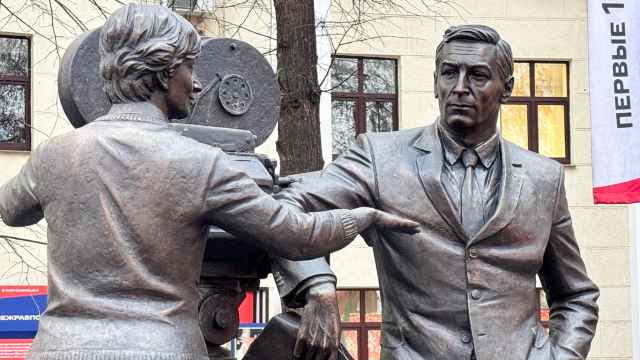In the wake of the Ottoman Empire’s crushing defeat in the Russo-Turkish War of 1768-74, one senior Turkish diplomat placed the blame squarely on the Empire’s Crimean Tatar allies. In his memoirs, he described them as having “become weak and lazy, addicted to tea, coffee and opium.” For him, the failure was not merely military — it was civilizational. “The Crimean Tatars have since ancient times been a burden,” he declared. “They are a seditious and sinister tribe.”
This image — of a disloyal, decadent people on the margins of Eurasian history — has long defined the Crimean Tatars in both Russian and Western memory. Donald Rayfield, a scholar of Russia and Georgia, sets out to dismantle this caricature in his sweeping new book, "’A Seditious and Sinister Tribe.’ The Crimean Tatars and Their Khanate,” shortlisted for the Pushkin House Book Prize 2025. Rayfield offers a complex portrait of a people who, far from being passive victims or unruly vassals, were once central players in Eurasian geopolitics and whose Khanate not only survived but flourished for centuries.
The Crimean Khanate, formed primarily with Turkic Qipçaq peoples and infused with Greek, Genoese, Gothic, and Ottoman ethnicities, emerged from the wreckage of the Mongolian Golden Horde around the 14th century. Under Hacı Geray and his successor Mengli, the khans managed to unify Crimea, forging ties with the Ottoman Empire (its main paymaster until the end of the 17th century), and defeating the last remnants of the Horde. For nearly three centuries, the Crimean Tatars were not peripheral nomads but regional powerbrokers — conquerors of Muscovy, scourges of Poland and Persia, and purveyors of slaves to the Ottoman court.
Rayfield does not shy away from the brutality of the Crimean slave trade — one of its primary exports — nor the chaos that accompanied internal dynastic feuds — of which there were many. Indeed, foreign observers in the 17th century were appalled by the raids, rapes and atrocities committed during Tatar incursions. Yet Rayfield’s point is clear: these actions, however horrific, were part of a wider Eurasian system of violence, and the Tatars played it as deftly as their neighbors. The wide range of imports, including Cossack cheese, Russian iron and Dutch cloth, reveals the cosmopolitan nature of Crimea’s commerce.
The Khanate’s decline was gradual but relentless. Russian ambitions, particularly under Peter the Great and Catherine the Great, placed Crimea under increasing pressure. By 1783, under the guise of a “voluntary” abdication by khan Şahin Giray, the Khanate was annexed by the Russian Empire.
From this point on, Crimea’s story turns darker: Rayfield chronicles the systematic ethnic cleansing, cultural erasure, and forced migration that followed Russian colonization. Villages were renamed, libraries torched and populations decimated. Rayfield concedes that census data remains unreliable, but estimates that by 1830, the Crimean Tatar population had dropped to a quarter of its size two centuries earlier.
The latter chapters of the book detail the grim trajectory of the Crimean Tatars under Soviet rule. The brief democratic flowering of the Crimean People’s Republic in 1917, led by Noman Çelebicihan — described by Rayfield as the world’s first Muslim secular democracy — was swiftly crushed by Bolshevik violence. Stalin’s terror culminated in the 1944 deportation of some 200,000 Tatars to Central Asia. He notes that Russification policies — such as the replacement of Latinized Turkic alphabets with Cyrillic — further cut the Tatars off from their history, culture and literature.
Rayfield’s book is encyclopedic, occasionally challenging, filled with unfamiliar Mongol, Turkish and Slavic names, and dense with detail. Yet it is also engaging and often witty. Recent scholarship — including Rory Finnin’s “Blood of Others” (2022) and Brian Glyn Williams’ “The Crimean Tatars” (2015) — has focused on the tragic destiny of the Tatars in the Soviet and post-Soviet period. Rayfield’s welcome contribution is to place this tragedy within a much longer arc of resistance, survival and betrayal.
Of course, such an arc is by no means complete, but ongoing. In fall 2023, Crimean Tatars of military age were disproportionately targeted for conscription into the Russian army; only those with money had the choice of seeking asylum abroad. The final line of Rayfield’s book thus lingers ominously: “The last stage of an ethnic genocide is in progress.”
‘A Seditious and Sinister Tribe’. The Crimean Tatars and Their Khanate

From Chapter One: Crimea Before the Crimean Khanate
Crimea has long been a uniquely attractive habitat for Europeans and Asians. A peninsula (in fact, almost an island, since a narrow isthmus is its only solid land connection to the steppes of southern Ukraine), not much bigger than the island of Sicily, its short winters and long summers are milder than the ferociously cold or hot steppes. It has a northern savannah zone, good for grazing cattle and, given skilled tilling, growing grain; a southern mountain chain runs from southwest to northeast, providing protection against natural and human forces, as well as numerous streams and Eastern Europe’s largest ancient broadwood forest; and a rocky Black Sea coast with several good harbours. Even more than Sicily, in antiquity Crimea attracted a bewilderingly mixed succession of immigrants before a dominant ruling culture (Turkic in Crimea, Italian in Sicily) moulded them into a governable community. With its fertile soil and its protection from attackers thanks to a dyke, or rampart and moat, cut across the Or Qapı Perekop) isthmus, its only land approach, Crimea was, like Sicily, well placed on international trading routes. For millennia goods were most easily moved overseas or overland between Europe and Central Asia, even China and Iran, through Crimean ports and entrepôts.
The name Crimea might be supposed to be derived from one of its early inhabitants, the Iranian Cimmerians; the etymology deriving Crimea from a Turkish root meaning ‘defense’ or defensive ditch is more plausible. In any case, the Turkic form qırım is not recorded before the thirteenth century CE.
At first the east Crimean town of Solkhat was renamed Eski Qırım (‘old Crimea’) by the Mongol–Tatar invaders. Its meaning, ‘old ditch’, may well be simply a translation from the original name of the town, Solkhat, deriving from Italian solcata, ‘furrowed’. It is notable, however, that Slavs in medieval times referred to the Crimean Tatars as the Perekop Tatars (Tatars of the ramparts or dyke). Archaeology, by studying ornamented stone tombs and barrows, shows that Crimea has been inhabited since prehistory. Not until around 500 BCE, however, do Greek historians and geographers help us identify who the Crimeans were. The earliest were the Cimmerians, whom Homer believed to live in thick fog. They may, like the Scythians, be one of the Iranian semi nomadic peoples who roamed the steppes before Turkic and Slavic tribes displaced them. Place names stemming from the Cimmerians are even today widespread from the Balkans to the Don River, and their influence was strong, for their metallurgy brought the Crimea out of the Bronze Age into the Iron Age. Horses provided them with transport, meat and milk; they had no personal property except for a sword and a chalice, their commerce was by barter, not money, and they were reputed to be the ‘most honest’ of ‘barbarian’ nations.
Between 1000 and 500 BCE the Cimmerians were ousted by, or merged with, or developed into the Taurideans. The word ‘Tauridean’ (and Tauris for the Crimea itself) appears to come from the Greek tavros (‘bull’), because of the use of bull’s blood in the Tauridean sacrifices to the virgin goddess Artemis. Possibly the name is connected with Anatolian words for ‘mountains’, and certainly the Taurideans were located in the mountainous south of the Crimea, where they practised shepherding on land and piracy at sea. Unlike the Cimmerians, the Taurideans had a fearsome reputation, killing and sacrificing any foreigner they captured. By 500 BCE they were confined to the Crimean mountains by a more powerful Iranian group, the Scythians, who together with the Greeks had formed a kingdom and a trading port on the mainland to the east of the Crimea, near today’s Taman.
The syllables of the very few surviving names of Cimmerian and Tauridean leaders and tribes, such as the Cimmerian Teupsha or the Tauridean fief Sinkhi, suggest that, whatever Iranian genesis they had, there was a substratum from northwest Caucasian peoples, such as Circassians. Their disappearance is as obscure as their origin. It is most likely that they gradually lost their identity to a Turkic majority in the Crimea.
The next wave was Scythian, so powerful that the Black Sea became known as the Scythian Sea. It was enough to forge a dual empire, thanks to migrants from Greek cities who set up trading posts all around the Black Sea. The Pontic Bospor empire in the northeast, under the control of a succession of emperors called Mithridates, is a unique example of Greek and Scythian joint rule. The Scythians, unlike the peaceful Cimmerians and violent Taurideans, were all-rounders, producing wool, meat, wheat and manufactured goods, including remarkable jewellery. They developed in Crimea a complex society in which warriors, farmers, industrialists, shipbuilders, architects, traders and government officials all played a role (Greek being the lingua franca). Nomads now coexisted with settled and urban communities. By the beginning of the Christian Era, Roman writers had to concede, ‘These Scythians are far better educated than other barbarians; you can find very clever and enlightened persons among them, in a nation which always has a weapon in its hands.’ Like their predecessors (a wave of Iranian tribes, the Sarmatians) Scythians in Crimea were eventually assimilated by later Turkic immigrants. But local people’s pride in a supposed Scythian ancestry remained even when the Crimea formed a Turkic khanate.
The Scythian influence was so strong that when the Roman empire in 45 CE finally included Crimea and Roman citizens settled there, the settlers preferred to spend the summers in Scythian-style yurts, rather than build villas. The Crimean markets, however, were full of goods that met the massive demands of the Roman army and which were weighed out with Roman measures and scales. The Roman military executed pirates and made Black Sea trade safe. Crimea prospered: it produced not just salt and newly introduced olives, but the fermented fish sauce garum that the Romans loved. Crimeans learnt how to make glass and to organize a fishing fleet. The Crimean economy was now short of labour, yet slavery was abolished in favour of better-motivated paid workers. The Romans in the Crimea, however, faced constant attacks from Taurideans and were never assimilated despite their forts and a whole network of roads. In the fourth century CE, when the Roman empire was contracting, they abandoned their furthest outposts. The empire split into a western Roman and an eastern Byzantine empire. It was the Greeks of the Byzantine empire who stayed on in the Crimea, first as traders and eventually as would-be rulers.
The remains of a Jewish cemetery indicate that Jews began emigrating to Crimea as early as the first century BCE. There were further waves much later, when Jews were subjected to persecution in the Byzantine empire. If, as is generally supposed, the Turkic Khazar aristocracy converted to Judaism towards the end of the first millennium, then the Jewish Karaim (‘readers’) soon outnumbered orthodox rabbinical Jews in Crimea, whose earliest known synagogue was built as recently as 1309.
Under Byzantine sovereignty, Crimea still had regular tides of immigrants, but from the sixth century onwards these were more refugees than invaders. The first influx was of Ostrogoths: like the Visigoths they were émigrés from the overcrowded Baltic island of Gotland, but unlike the Visigoths, who headed for Rome and sacked it before establishing an empire in the Iberian peninsula, the Ostrogoths first threatened the Byzantines on the Danube, then, as later, the effective northern border of the Byzantine empire, and after negotiations were incorporated as mercenaries and as borderland settlers. (Large numbers of Ostrogoths, however, roamed further east to the Don in the third century CE and in alliance with, or opposition to, various Iranian groups followed the Black Sea coastline, fought Roman and Greek garrisons and ravaged large areas of Anatolia, before disappearing from history.)
The Goths were driven south by a population explosion, crop failures and famines that reduced them to a diet of beech nuts and grass roots. Their long journey south to the promised land took them two centuries, crossing Russia (where they gave the Slavonic natives Gothic words for sword and bread), before reaching the sea. They settled first in modern Moldavia, before negotiating submission to Byzantine authority, accepting Christianity and settling in the well-fortified southwest of Crimea, in a province called Gothia by St John Chrysostom, who ordained a later Crimean bishop. This Gothic–Greek principality had a capital called Doros or Dori, built on an impressive and impregnable limestone plateau. As farmers and villagers, rather than nomads, the Goths found it easier than earlier immigrants to build and inhabit permanent settlements, even though they cautiously chose steep mountain slopes rather than easily tilled flat lands vulnerable to subsequent invaders. By the sixth century, it is estimated that some 60,000 Goths were established in southwest Crimea and could provide 3,000 trained soldiers for the Byzantine army.
The Goths effortlessly overcame the resistance of the established population. Taller and leaner than the Iranian nomads, they were also more sophisticated and flexible: even though the version of Christianity they adopted in the fourth century was, at first, a heretical Aryan one that denied Christ the immutable and eternal status of God the Father, conversion integrated the Goths with the ideology of the Byzantine empire. Adherence to the Aryan heresy effectively rejected the Trinity and might eventually have made it simpler for Goths in the Crimea to convert to Islam. By the eighth century, however, the Goths had Greek bishops and became fully Orthodox Christians. Literacy and the adoption of the imperial religion gave the Goths an advantage over all the other former ‘barbarians’ under Byzantine tutelage. Sixth-century Byzantine scholars praised the Goths as ‘fine warriors, energetic and skilful farmers, distinguished for being the most hospitable of all people’. The Goths established the Crimea’s modern reputation for growing fine fruit in abundance. Under their missionary-bishop Ulfilas (whom Emperor Constantine II called ‘the Moses of our time’), the Goths quickly adapted the Greek alphabet for their own language and produced a version of the New Testament that remained in use in the Crimea for at least five centuries. (Gothic inscriptions in stone are still being discovered in Crimea; in 1582 Ogier Ghislain de Busbecq, Flemish ambassador to the Ottomans, with the aid of his German-speaking servant, transcribed some eighty words and a song from two speakers of Crimean Gothic, and, to judge by a report from a visiting Catholic archbishop, the Gothic language may have persisted until the late eighteenth century in remote mountain villages.) They also wore traditional Scandinavian dress and jewellery and built houses in stone and wood exactly as they had in Gotland.
Over the next centuries the Crimean Goths had to defend themselves, sometimes without Byzantine help, against new invaders. They fought off the Khazars in the eighth century and in 833, in alliance with Khazars, were threatened by the Russian prince Bravlin, who looted churches and palaces in the southwest ports and captured and enslaved thousands of Goths and other Crimeans. In the tenth century the Gothic viceroy (toparch) went to Kiev to negotiate peace with Russia and, recognizing Byzantium’s weakened powers, accept a degree of Russian suzerainty. We know little of Gothic fortunes in Crimea until the thirteenth century, when Guillaume de Rubrucq reports ‘teutonic’-speaking Crimean cities, now paying tribute to Turkic Cumans. After the Mongol invasion the Goths, as ‘owners of Theodor and the Coast’, were assigned power, together with Genoese merchants, over the southern Crimea. Both nations lost power only when the Ottomans invaded in the 1470s, with artillery and a policy of ruthless slaughter.
The Gothic heritage in Crimea is not just visual. Even today there are Crimean Tatars, blue-eyed, fair-haired, who look as if they have stepped out of an Ingmar Bergman film, and the Crimean Tatar language itself has Gothic relicts: fair-haired men are called Gottfrieds, wooden buttresses paivander, roof rafters razn, warm rooms stube and pantries keler.
***
Excerpted from ‘A Seditious and Sinister Tribe’. The Crimean Tatars and Their Khanate, written by Donald Rayfield and published by Reaktion Press. Copyright © Donald Rayfield 2024. Used by permission. All rights reserved. For more information about the author and this book, see the publisher’s site here.
’A Seditious and Sinister Tribe’ has been shortlisted for this year’s Pushkin House Book Prize, which will be awarded on June 19 in London. Tickets for the ceremony are available here.
A Message from The Moscow Times:
Dear readers,
We are facing unprecedented challenges. Russia's Prosecutor General's Office has designated The Moscow Times as an "undesirable" organization, criminalizing our work and putting our staff at risk of prosecution. This follows our earlier unjust labeling as a "foreign agent."
These actions are direct attempts to silence independent journalism in Russia. The authorities claim our work "discredits the decisions of the Russian leadership." We see things differently: we strive to provide accurate, unbiased reporting on Russia.
We, the journalists of The Moscow Times, refuse to be silenced. But to continue our work, we need your help.
Your support, no matter how small, makes a world of difference. If you can, please support us monthly starting from just $2. It's quick to set up, and every contribution makes a significant impact.
By supporting The Moscow Times, you're defending open, independent journalism in the face of repression. Thank you for standing with us.
Remind me later.







